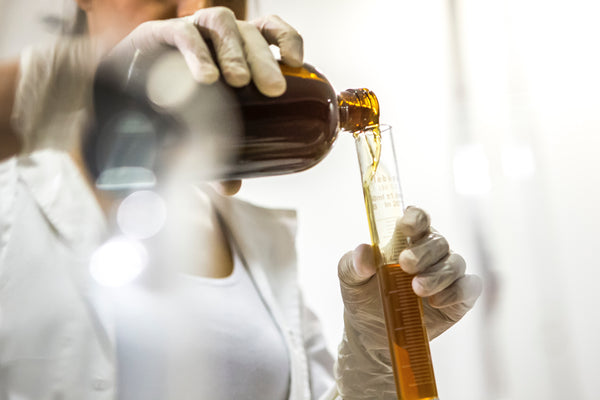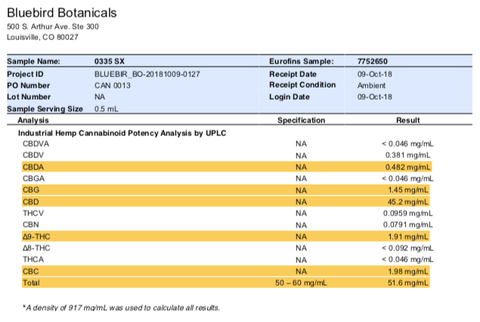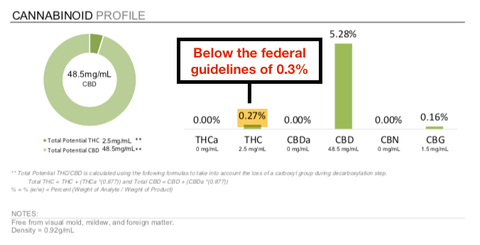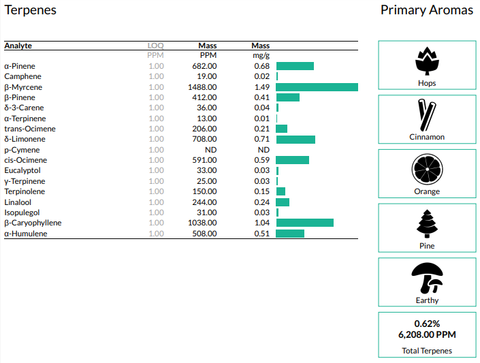What’s In Your CBD Oil? Making Sense of Labels and Lab Tests

Clean eating has been a rising health interest for a few years now, and rightfully so. Most modern consumers recognize the importance of knowing what’s in their food and how it affects them.
But how many people give the same consideration to their supplements? With the growing popularity of CBD oil as a health supplement, hemp extracts are suddenly flying off the shelves. However, most people don’t know what goes into their hemp extract or how their product is being tested.
For this very reason, Bluebird Botanicals prides itself on a comprehensive and fully transparent third-party batch testing system. We believe our customers deserve to know exactly what they are putting into their bodies with every single product that we produce.
Many hemp extract companies do share Certificates of Analysis (COAs) for their products on their websites. Our goal is to educate CBD users about how to read and understand their test results for their products, no matter where they purchase them from.
There are a variety of things to look out for when reviewing your CBD oil test results. Here’s how to read those reports like a pro:
1. Look for batch test results versus one sample test result.
While many companies share their lab tests online, they might just be sharing one result for one batch out of the many used to make their products. The contents of hemp plants can vary widely, from terpene distribution to the concentration of various cannabinoids. So, even if one batch seems fine, the next batch could turn up completely different results.
Make sure that you are able to see the test results for the specific batch of your hemp product to guarantee you know exactly what’s in your bottle.
For Bluebird Botanicals products, you can find the batch number on the side of the bottle above the QR code. Plug that into the batch database on our website to see the test results for your specific blend of hemp extracts in your bottle.
2. Check the potency of your extract.
Bluebird Botanicals always shares at least two potency tests from two different laboratories to ensure the quality of our hemp extracts and verify our cannabinoid content.
When you purchase a full-spectrum hemp extract, it means that your product contains a whole array of cannabinoids in addition to CBD. These cannabinoids all work together as part of an “entourage effect” to maximize the health benefits. Additionally, full-spectrum hemp extracts often contain minuscule amounts of THC (∆9-tetrahydrocannabinol). THC is the cannabinoid that’s responsible for the high that users feel. Federal guidelines stipulate that hemp extracts must contain less than 0.3% THC by dry weight, which means that most people do not feel the psychoactive effects unless they consume large quantities of concentrated hemp extracts.
When checking the potency of your product, we recommend paying attention to the amount of THC and other key cannabinoids like CBDA (cannabidiol acid), CBG (cannabigerol), and CBC (cannabichromene).
Here are two samples of potency tests available for one of our products on our website. You can see the amount of each major cannabinoid present. Remember to check that the amount of THC in your product is less than 0.3%.


3. Discover any harmful substances that could be in your extract.
In addition to potency tests, CBD suppliers should also be transparent about what else is in their hemp extracts. The most important things to look for is the presence of heavy metals, mycotoxins, and pesticides.
You may be alarmed if you take a quick glance at our reports and discover that there are some naturally occurring levels of pesticides and heavy metals in your oil. Don’t panic! Bluebird Botanicals adheres to the guidelines set forth by California’s Proposition 65, which requires businesses to provide warnings when their product contains chemicals that could cause cancer, birth defects, or other reproductive harm. California’s Proposition 65 contains the strictest guidelines in the country and we’re proud to always exceed even their stringent quality controls.
For instance, it stipulates that the maximum amount of lead that’s allowed to be consumed per day is 0.5mcg. However, many fruits, vegetables, and even drinking water, all naturally contain some levels of lead that are often significantly higher than 0.5mcg. This is because plants absorb metals and other trace chemicals from the soil in which they’re grown. The State of California’s own studies of soil from 70 different locations established that most vegetables averaged four times the Proposition 65 limits. Since these levels are recognized as naturally occurring, food producers are not required to provide warnings.
If you adhere to our serving sizes, you can rest assured that you will never exceed Proposition 65’s daily limit of 0.5mcg for lead. Indeed, for most of our products, you would have to consume a large number of servings to even come close to the daily limit at all.
4. Read up on your oil’s terpene profile.
A vital part of your hemp extract lies in its terpene profile. Terpenes are the molecules that give the taste and aromas to most of our favorite fruits, vegetables, and plants. There are over 55,000 types of terpenes that naturally occur in the environment and many of them show up in a variety of botanicals.
Check out the most common terpenes found in cannabis and where else you might encounter them in nature:
Pinene: Conifers and sage
Caryophyllene: Cinnamon, black pepper, and hops
Myrcene: Bay, thyme, parsley, cardamom, and hops
Ocimene: Mint, basil, mangoes, and orchids
Limonene: Citrus fruit peels
Terpinene: Citrus, eucalyptus, and juniper
Linalool: Lavender
Humulene: Hops, basil, and clove
Next time you take your favorite CBD oil, pull up its terpene report and see what tastes and smells you recognize!

5. Don’t forget your product label.
It is essential for first-time CBD users to know how to read the product label on their bottle. This is where you’ll find information about the serving size, the maximum number of servings recommended per day, amount of cannabinoids in each serving, and the other ingredients in your extract like hemp seed oil or frankincense.
Our standard serving size recommendation for all products is 15 drops or 0.5 milliliters of oil. However, the maximum number of servings is different for each of our products, especially between our regular and concentrated CBD oils.
6. If you have any questions, don’t hesitate to call!
We at Bluebird Botanicals are dedicated to providing not only the highest quality hemp extracts but also the best customer service to boot. If you have any questions about what’s in your extract or how to understand your product’s test results, give our customer care team a shout via email at info@bluebirdbotanicals.com.










